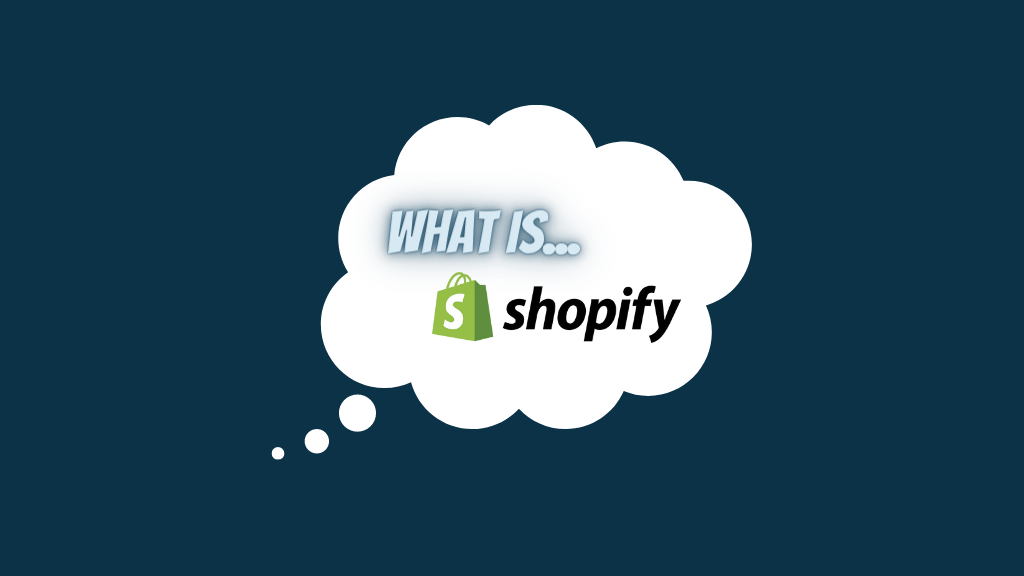
What is Shopify? And how does it work?
If you’ve been asking yourself these questions, this post is for you. Below you’ll find a simple overview of Shopify, its history, a list of some of its key pros and cons and tips on how to get started with it.
You can also watch our video introduction to the platform too (below).
Right, let’s dive in.
What is Shopify?
Shopify is an application that lets you start your own online store. The platform gives you an easy-to-use interface to do so, which you access through a web browser. No technical or coding skills are needed to build a store with it.
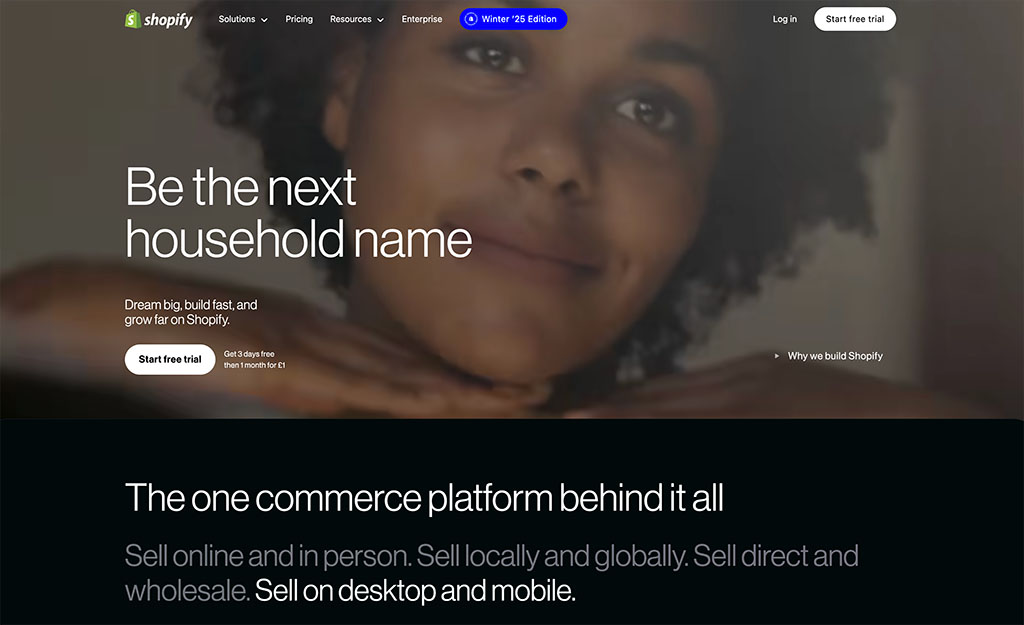
However, because Shopify offers extensive access to store code, the platform caters for developers too.
Shopify was created in Canada in 2006 by German-born entrepreneur Tobias Lütke (pictured below), who realized that an ecommerce solution he had designed to sell snowboards could actually be sold to other businesses. It’s now one of the most popular ecommerce platforms on the planet.

But how does Shopify actually work?
How does Shopify work?
Shopify is a ‘hosted’ solution. This means that it runs on its Shopify’s own servers, and you don’t have to buy web hosting or install any software to use it.
You build and manage your store in a web browser — so, as long as you have access to the Internet, you can run it from absolutely anywhere.
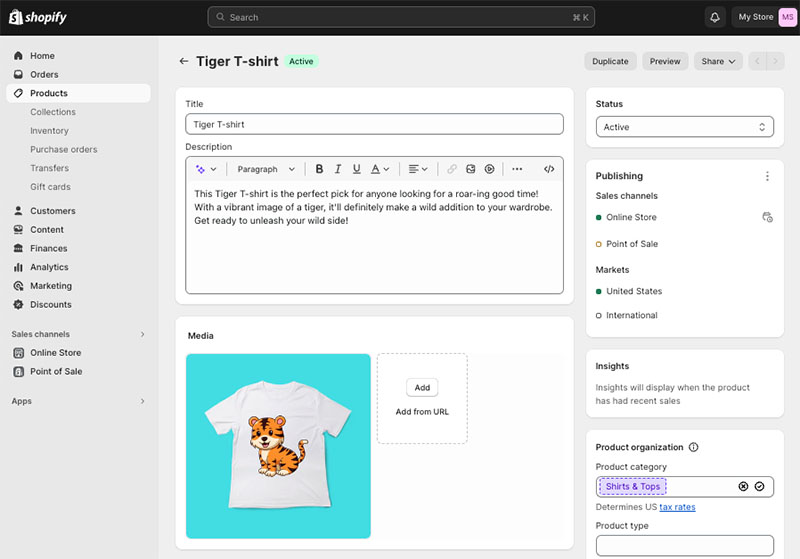
The platform aims to give you the key things you need to build and market an online store ‘out of the box.’ Themes, a payment processor, a blog, SEO features and free email marketing tools are included with most plans.
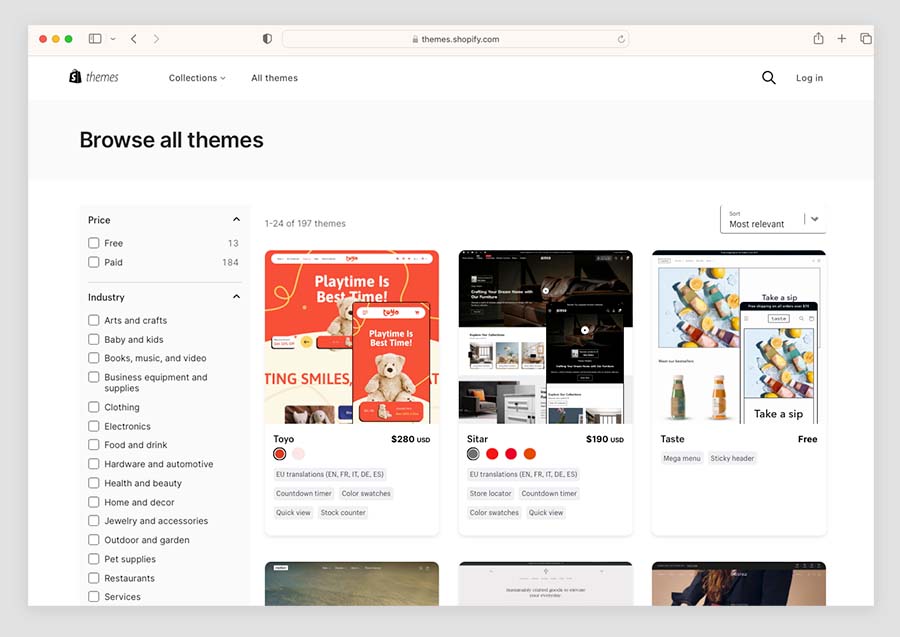
That said, you can customize a Shopify store further by adding apps (13,000+ are available for the platform in its app store), or by editing its code.
Finally, because Shopify is a ‘software as a service’ product — a ‘SaaS’ tool — you don’t own a copy of it, but instead, pay a monthly fee to use it. Before committing to this fee however, you can try Shopify out via an extendable free trial.
Now, a quick look at Shopify’s userbase size.
How many people use Shopify?
Estimates of Shopify usage vary and official figures of the number of stores built with Shopify aren’t published.
However, the Internet statistics company Builtwith reports that there are approximately 5.5 million live Shopify stores in existence, with a majority of these — 3.1 million — being operated in the USA.
Builtwith also estimates that 24% of the top 1 million ecommerce sites are powered by Shopify; and this figure rises to 30% when Shopify Plus stores are taken into account.
The platform is used not just by small business owners, but big brands too — the platform has been used to build the Fitbit, Staples, Heinz, Decathlon and LA Lakers stores, among others.
You can find out more about Shopify usage and access more interesting stats about the platform in our Shopify statistics article.
How much does Shopify cost?
There are five main Shopify plans available:
- Starter — $5 per month
- Basic — $39 per month
- Shopify — $105 per month
- Advanced — $399 per month
- Shopify Plus — custom pricing, but starting at $2,300 per month.
In some countries, a new ‘Commerce Components‘ plan is now also available. This lets you use Shopify on a ‘modular’, pick and mix basis, where you only pay for the features you need.
If you have the budget to pay upfront for a year’s service, you can reduce your subscription cost by 25%.
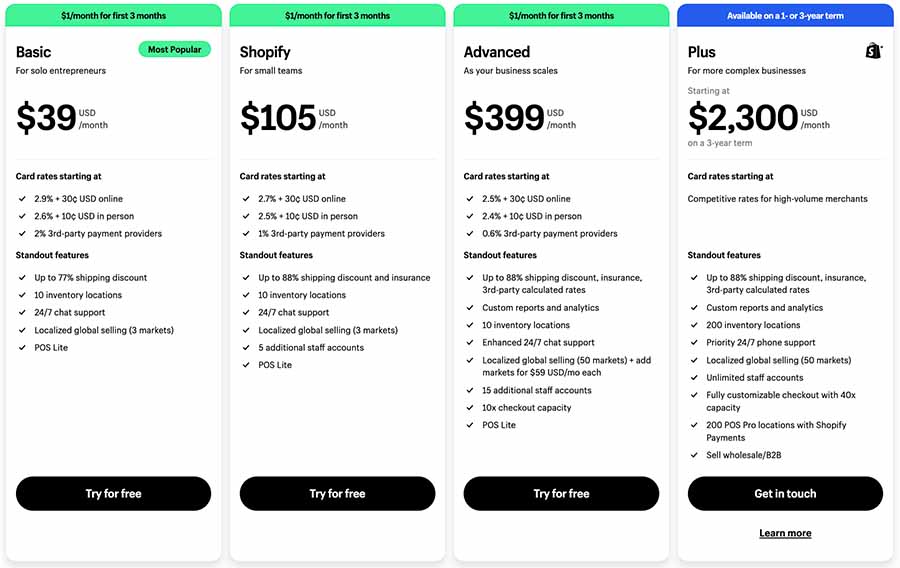
For a full rundown of the precise features that you get in each plan, please see our Shopify pricing guide. But the key differences between these plans are as follows:
- The ‘Starter’ plan allows you to embed products and product catalogs on an existing site (via a Shopify ‘buy button’), or sell via social channels — but you can’t build a fully-customizable standalone online store with it.
- The number of users who can access your account varies by plan.
- Credit card fees and transaction fees decrease as the monthly plans become more expensive.
- You get more sophisticated international selling features on the ‘Advanced’ plan or higher.
- The ‘Shopify Plus’ plan is an enterprise grade solution aimed at larger businesses with advanced requirements regarding APIs, server uptime, task automation and support (you can learn more about the differences between Shopify and Shopify Plus here).
Additional features can be added to a Shopify store via the purchase of apps (13,000+ are available from the Shopify app store), or by paying for its ‘POS Pro’ system, which gives you more advanced options for accepting payments at point of sale (in retail outlets, markets etc.).
There’s also a free Shopify trial available.
What can I sell on Shopify?
Prohibited items aside, the platform lets you sell pretty much anything! Items you can sell include:
- physical items
- digital goods (eBooks, music downloads etc.)
- NFTs (non fungible tokens)
- subscriptions
- gated content — online courses, members areas etc.
- tickets for events
and much more beside.
Dropshipping with Shopify
If you like, you can use Shopify to dropship products rather than sell inventory that you ship yourself.
Dropshipping is an online business model where you don’t manufacture, purchase, store or deliver any products. Instead, you take orders for products via your online store, and pass them onto a supplier. Your supplier then charges you, and ships the goods to the customer.
You can learn more about dropshipping with Shopify in the video below.
Using Shopify with print-on-demand services
You can also use print-on-demand services with Shopify. Print on demand (POD) is a business model where a product is only made — or ‘printed’ — after a customer has placed an order.
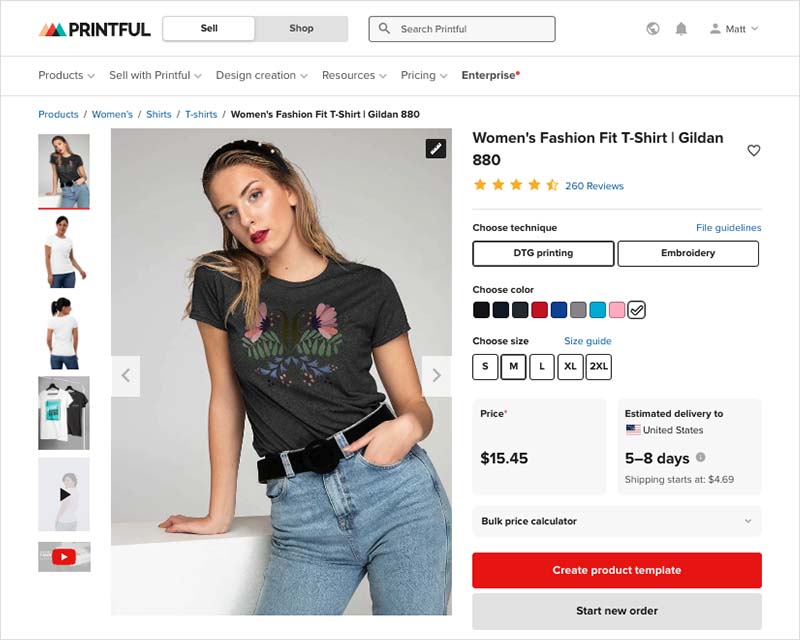
POD works in a similar way to dropshipping, but allows for greater customization. You upload designs (in the form of images or text) to a print-on-demand service’s website and then use these to create custom products. The POD service then handles the rest, taking care of all product manufacturing, packaging and shipping.
Popular POD apps for Shopify include Printful and Printify.
Where can I sell on Shopify?
You can use Shopify to sell either online or in person.
You can sell online in various ways, but the main methods of doing so are by:
If you’d like to sell in person, you’ll need to use Shopify’s POS system (POS stands for ‘point of sale’).
This lets you accept payments in physical locations, like…
- retail stores
- pop up shops
- market stalls
- concerts / events
and anywhere else where you might be selling face-to-face.
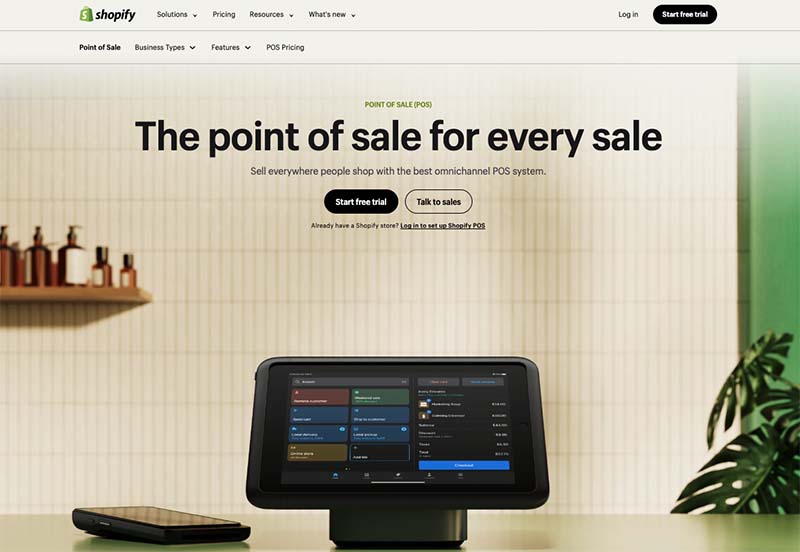
All Shopify’s plans — including its $5 per month ‘Starter plan’ — facilitate point of sale selling, and you can buy hardware from the company (card readers, receipt printers etc.) to help you with it.
How do I get started with Shopify?
To build your own online store with Shopify, you need to start a free trial.
You then:
- Choose a Shopify theme
- Connect a payment processor (Stripe, Shopify Payments, PayPal etc.)
- Add your products
- Choose shipping methods
- Configure tax rates
- Pick a plan
- Configure your SEO settings
- Launch your store.
You can find out more about how to start selling on Shopify and launch a successful ecommerce store in our detailed Shopify tutorial.
One thing you should note however is that you won’t be able to accept payments while using a free trial — online selling is only possible once you’ve got a paid-for Shopify account.
What are the pros and cons of Shopify?
For a detailed look at the pros and cons of Shopify, I recommend reading our Shopify review or watching our Shopify review on YouTube. However, if you’re in a rush, you’ll find some of the key pros and cons listed below.
Pros of Shopify
- It’s easy to use. Shopify has been designed for a non-technical audience and no coding skills are required to use it. You don’t need to install any software on your computer to use it — all you need is a web browser and Internet access to start selling online.
- The templates are well-designed. There’s a decent selection of free and premium themes available for Shopify. They’re mobile friendly and they look great.
- It’s great for dropshipping. In fact, Shopify is probably the best ecommerce platforms for merchants who want to dropship, because it offers a really wide range of dropshipping apps that let you sell lots of different goods from lots of different suppliers.
- It lets you sell in person really easily. You can integrate Shopify with a wide range of point-of-sale hardware, like card readers, barcode scanners, receipt printers and tills.
- It’s great for international selling. Unlike some key competing products, Shopify makes it easy to sell your products in multiple currencies and languages.
Cons of Shopify
- Shopify places quite tight limits on product options. There’s a limit of just three for most users at present, so if your products come in lots of shapes and sizes, you might need to think about using a different platform — or paying extra for a Shopify app that lets you create more options.
- Adding custom fields is hard. If you’re a merchant who needs to capture personalized information at checkout — for example, text for an engraving — then you might find Shopify a bit frustrating. Creating custom fields involves either adding some code to your site or again paying extra for a Shopify app that provides this functionality.
- Transaction fees apply when you use an external payment gateway. If you don’t use Shopify’s built in payment processor, Shopify Payments, you’re charged a transaction fee on each sale.
- Full point of sale functionality is expensive. Although you can do a lot with the built in Shopify point of sale functionality, to get the most out of it, you’ll need to pay quite a bit extra every month for a Shopify POS Pro add on: $89 per location.
- You’ll often need to install or buy an app to gain key features. Some key features that you might expect to be built into Shopify are either missing or a bit inadequate, and you will often have to add an app to gain the functionality you need. Examples of this include facilitating digital downloads, letting users upload files at checkout or getting the ability to use a wider range of product options.
What is Shopify — FAQ
What is Shopify used for?
Shopify is a piece of software that lets people sell products, either via an online store or in person using card readers and other point of sale hardware.
Is Shopify good for beginners?
Yes — the platform is user-friendly and no coding knowledge or special equipment is needed to build your store with it. You just need a web browser and access to the Internet to use the platform.
Is Shopify free or paid-for?
Although a free trial is available for Shopify, using the platform involves a monthly or annual subscription.
What’s the difference between PayPal and Shopify?
While PayPal lets you sell items on websites via a button that you embed on them, Shopify lets you create entire online stores.
How does Shopify differ from Amazon?
Shopify is used by individual merchants to build an online store, while Amazon IS an online store, featuring products sourced from millions of merchants.
Who owns Shopify?
These days, Shopify is a publicly traded company. But it started life in June 2006 with 3 founders: Tobias Lütke, Daniel Weinand, and Scott Lake. The trio were driven to build their own ecommerce platform to sell snowboarding equipment, having found existing ones less than satisfactory.
What are the main alternatives to Shopify?
Alternative online store builder tools include Squarespace, BigCommerce, WooCommerce, Ecwid and Wix. Like Shopify, these all let you build your own website without needing to code. You can learn more about Shopify alternatives here.
How do Shopify merchants generate online sales?
In order to sell successfully with Shopify, Shopify store owners need to engage in promotional activities — email marketing, content marketing and online advertising can all be used to boost sales.
Can I sell internationally with Shopify?
Yes — its ‘Markets’ feature lets you sell in multiple languages and currencies.
And that’s it! If you have any questions or feedback, do leave them in the comments section below.
No comments